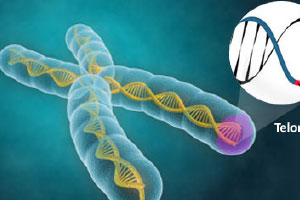 The future of medicine is here.
The future of medicine is here.
No longer do you need to guess what diet, exercise, or lifestyle recommendations are best for you.
With a simple at-home lab test, you can now uncover your genetic code.
The entire at-home test consists of spitting just a little saliva into a plastic tube that then gets submitted to a world-renowned laboratory testing facility.
Stop Guessing – Test Today
In about 3 weeks my office receives a 100 page report detailing your SNP (single nucleotide polymorphisms), which are the influencers of your genetics.
(Everything the Genetic Wellness, Weight Loss & Anti-Aging Test looks for is listed below)
It sounds more complicated than it really is and the lab does an amazing job at giving you a “green, yellow, or red” circle next to each item, to let you know if it should be a concern on not.

Everything You Need to Know on 1 Page
You’re going to get the 100 page genetic test, but also I personally review your all of lab results and create a 1 page “cheat sheet” outlining what you need to know about your results.
I’ll also write down the recommended lifestyle, exercise, and nutritional supplements your genetic’s lab specified.
And, you have the option to let us know if you’d like to be notified if you’re at higher risk for developing Alzheimers. Many of our clients choose to know so that they can begin taking measures now in order to hopefully prevent this disease.
Learn How to Take Control
Remember, you are not destined to become your genetics – it is simply the code that may be expressed depending on environmental and lifestyle factors – you control much of this!
Families are also testing all their children as well, so that they know ahead of time what I child is prone to, and how they may work around those issues ahead of time. And since, your genetics will not change, this lab test only needs to be run once.
It’s truly a remarkable test and one that I believe every person should run as early as possible in their life.
How to Get Started
Simply click the button below to order your Genetic Wellness, Weight Loss & Anti-Aging Test.
You will then be directed to our secure shopping cart where you can pay by credit card or PayPal.
After you place your order, we will mail out your at-home lab test the next day with simple to follow instructions on how to complete it.
We’ll be with every step of the way, and if you ever have any questions simply email us at anytime.
 Ayubowan,
Ayubowan,
Stephen Cabral
Board Certified Doctor of Naturopathy
Full Details on Genetic Wellness Test
– – –
Lipid Metabolism
The lipid panel is main hub for a heart health based diet. In particular Apolipoprotein E (APOE) genotyping maybe ordered by the practitioner when a patient has significantly elevated cholesterol and triglyceride levels that do not respond to dietary, exercise and lifestyle changes. A number of genetic variants have been identified that negatively impact the concentration of plasma lipids in response to the amount and type of fat consumed; total cholesterol, HDL-C, LDL-C and triglyceride levels. These genetic variants analysed include APOA1, LPL, ABCA1, CETP, LIPC, APOB, APOB100, APOCIII, APOA5,LDL-R, eNOS3, FABP2 and LPA.The application and clinical benefit is for those patients with disorders of lipid metabolisms. The patient has an active role in lifestyle changes with specific nutrition based therapy. The selection of other genes involved in lipid metabolism is targeted to genes involved in HDL-C level, fat absorption, fat transport and the conversion and degradation of fat. Dyslipidemia can have various genetic causes which are influenced by nutrition, alcohol, smoking and sex-specific effects.
Metabolic Syndrome and Diabetes
This is a genetic risk assessment for Type II Diabetes and Metabolic Syndrome (MetS). Diabetes is one of the major diseases of this century and genetics, lifestyle and nutrition are all equally important considerations. The long-chain acyl CoA synthetase 1 (ACSL1) and acetyl-CoA carboxylase (ACC2) play a key role in fatty acid synthesis and oxidation. Disturbance of these pathways is associated with impaired insulin responsiveness and metabolic syndrome (MetS). Moreover the ACSL1 and ACC2 gene polymorphisms are modulated by dietary fat intake. The individual being tested is genetically predisposed to normal, moderate or high level of Diabetes risk. Genetic variations detected in the TCF7L2,WFS1 and SLC30A8 genes have been reported to play a role in insulin function. The, FTO, G6PC2 and PPARG genes will indicate an increased likelihood of developing type 2 diabetes due to a higher BMI (FTO), reduced control of blood glucose levels (PPARG and G6PC2) or reduced pancreatic beta cell function (SLC30A8).
Inflammation
Inflammation has a key role in chronic diseases including diabetes, osteoporosis, obesity, aging and cardiovascular disease. Susceptibility to increased inflammatory response is genetically determined. Common variants found in the TNFA,IL6 and CRP genes are analysed.
Sodium Sensitivity
High blood pressure or hypertension is the leading cause of strokes and major risk factor for heart attacks. Two gene variants are analysed ACE and AGT which have been reported to be associated with sodium sensitivity.An individual with a “salt sensitive” genotype may result in higher plasma angiotensinogen levels and ultimately higher blood pressure leading to an increased risk of hypertension.
Co-enzyme Q10
A variant in the NQO1 gene is associated with reduced NQO1 enzymatic activity reducing the one electron reduction of quinones that results in the production of radical species.
Omega 3 and Omega 6
A variant in the FADS1 gene is associated with decreased blood levels of Arachidonic Acid (AA) and Eicosapentanoic acid (EPA). AA is a long chain omega-6 acid and EPA is a long chain omega-3 acid. Individuals with this genotype may have reduced blood levels of omega 3 and omega 6 fatty acids.
Vitamins
There are genetic makers associated with lower levels of vitamins B2, B6, B12, C, D and E. Variants in the MTHFR, NBPF3, FUT2, GSTT1, GSTM1, SLC23A1, INTERGENIC, GC, DHCR7 and CYP2R1genes are markers which may indicate lower levels of dietary vitamins.
Methylation – Folate and cofactors
The ability to reduce homocysteine to cysteine and methionine is influenced by genetics, environmental factors especially vitamins B2, B6, B9 and B12 as well certain medications and lifestyle factors. Variants in the MTHFR, MTRR, MTR, CBS, TCN2 and SLC19A1 genes are associated with elevated homocysteine levels and an increased risk of vascular disease including peripheral and cerebral vascular disease, coronary artery disease and thrombosis.
Choline
Genetic variation in the MTHFD1 gene is associated with an increased risk of developing choline-deficiency induced organ dysfunction and/or having a child with a neural tube defect. This is due to the increased demand for choline as a methyl group donor. Low dietary choline has been reported to contribute to high homocysteine levels.
Caffeine Metabolism
A variant in the CYP1A2 gene is associated with slow caffeine metabolism. This genotype is associated with an increased risk of hypertension and heart attack when caffeine consumption exceeds two cups of coffee per day.
Coeliac disease
Genetics is the most powerful known risk factor for coeliac disease. The analysis of DQ8and DQ2.5 genetic variants provides information on the likelihood that an individual has the disease. This is a risk assessment and not a medical diagnosis of coeliac disease.This test is useful for its negative predictive value.
Lactose Intolerance
The MCM6 gene analysis provides information on lactose intolerance caused by non-persistence of lactase into adult life.
Oxidative Stress
Oxidative stress is a major cause of premature ageing and cell death. The major enzymes involved in anti-oxidative defence SOD2, GPX1 and CAT are assessed.
Phase I and Phase II Detoxification
Drugs (including caffeine), metals and hormones are transformed in the Phase I process into reactive bioactive compounds. The enzymes CYP1B1, CYP1A1 and COMT are involved in this process. Assessment of the enzyme function is useful in relation to the processing of compounds such as xeno-estrogens. Metabolites from Phase I detoxification are transformed into water soluble compounds which are then excreted in urine. Down regulation of Phase II detoxification may lead to an accumulation of toxic metabolites. The glutathione transferase enzymes GSTT1, GSTM1 and GSTP1 are involved in this process.
Weight Management
This section of the report includes genetic variants whose activities are modified by nutrition and exercise such as saturated fat (APOA2) and monounsaturated fat (APOA5 and PPARG), predisposition to higher total cholesterol (NPY) or attenuated improvement in HDL-C level (PPARD). Genetic information in relation to satiety or feelings of fullness (FTO), Bitter taste perception (TAS2R38) which may increase salty food intake,resistance to weight loss (ADRB2 and ADRB3), increased snacking (MC4R), circulating levels of adiponectin and weight regain (ADIPOQ), increased consumption of sugary foods (SLCA2) and food addiction (DRD2), increased metabolic rate (LEPR) and exercise in relation to weight loss maintenance and benefits of weight loss in relation to protein intake (FTO).
Physiogenomics
Physiogenomics integrates genotypes, phenotypes and functional variability amongst individuals. A phenotype is a measurable physiological, morphological, biological, biochemical or clinical characteristic. Genotype refers the genetic composition of that individual. The section of the report covers increased risk of obesity, depression and episodic memory (BDNF), blood pressure response to exercise (EDN1), KIBRA and working memory, HPA axis stress responses in particular elevated ACTH and cortisol levels (TH and MR), seasonal variation in sleep, mood, appetite, social activity (NPAS and CLOCK), increased plasma ghrelin level and weight gain (CLOCK) and exercise in relation to reducing injury and developing a personalized exercise and recovery plan (COL1A1, VDR (FOK1), ACTN3, HIF1, MCT1, VEGFR2,eNOS3 and ACE).
Please email us with any questions or if we can help in anyway!
